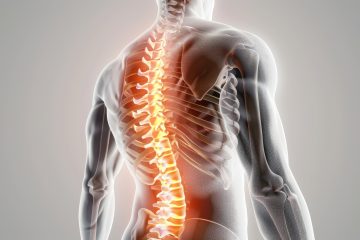If you’ve ever experienced a sharp, shooting pain that radiates down your leg from your lower back, you may be dealing with sciatica. This condition affects up to 40% of people at some point in their lives, making it one of the most common causes of chronic lower back and leg pain. While many assume that sciatica is just another type of back pain, it’s actually caused by irritation or compression of the sciatic nerve, the longest nerve in the human body.
Understanding the causes, symptoms, and treatment options for sciatica is crucial for long-term relief. Whether you’re dealing with occasional discomfort or debilitating pain, chiropractic care offers a safe, non-invasive solution to help manage and alleviate sciatica symptoms.
What is Sciatica?
Sciatica is a nerve-related condition characterized by pain that travels along the path of the sciatic nerve, which runs from the lower back through the hips, buttocks, and down each leg. The pain usually affects one side of the body and can vary in intensity from mild discomfort to severe, debilitating pain.
How Sciatica Differs from General Back Pain
Unlike general lower back pain, which is often caused by muscle strain or poor posture, sciatica is a nerve issue. It occurs when the sciatic nerve is compressed, irritated, or inflamed, leading to radiating pain, numbness, and weakness in the affected leg.
What Causes Sciatica?
Sciatica can develop due to several underlying conditions, most of which involve pressure on the sciatic nerve. Here are the most common causes:
1. Herniated or Bulging Discs (Most Common Cause)
- Up to 90% of sciatica cases are caused by a herniated disc pressing on the sciatic nerve.
- This occurs when the soft inner material of a spinal disc pushes through its outer layer, compressing nearby nerves.
2. Spinal Stenosis
- A condition where the spinal canal narrows, putting pressure on the sciatic nerve.
- Common in adults over 50, spinal stenosis can cause both sciatica and mobility issues.
3. Degenerative Disc Disease
- Age-related wear and tear can lead to spinal discs losing their cushioning, increasing nerve compression risks.
- More than 60% of people over 40 show signs of degenerative disc disease, which may contribute to chronic sciatica.
4. Piriformis Syndrome
- The piriformis muscle, located in the buttocks, can tighten or spasm, pressing on the sciatic nerve.
- Common in athletes, runners, and individuals with sedentary lifestyles.
5. Spondylolisthesis
- Occurs when one vertebra slips forward over another, pinching the sciatic nerve.
- Affects about 6% of the population, particularly in those with spinal instability.
6. Pregnancy-Related Sciatica
- 50-80% of pregnant women experience back pain, with many developing sciatica due to increased pressure on the sciatic nerve.
Symptoms of Sciatica
Sciatica symptoms can range from mild discomfort to debilitating pain. The most common symptoms include:
✔️ Sharp or Shooting Pain
- Typically felt in the lower back, buttocks, and down one leg.
- Can worsen with prolonged sitting, standing, or sudden movements.
✔️ Numbness or Tingling
- Some individuals experience numbness, weakness, or a “pins and needles” sensation in the affected leg.
✔️ Difficulty Walking or Standing
- Severe cases may lead to weakness in the legs, making standing or walking difficult.
✔️ Worsening Pain at Night
- Sciatica pain can intensify when lying down, making sleep difficult.
How is Sciatica Diagnosed?
A chiropractor or physician may use the following methods to diagnose sciatica:
- Physical Examination – Tests for muscle strength, reflexes, and flexibility.
- Straight Leg Raise Test – A common diagnostic test where lifting the affected leg triggers pain.
- Imaging Tests (X-rays, MRI, or CT scans) – Used to confirm nerve compression and detect herniated discs or spinal abnormalities.
Treatment Options for Sciatica
Conventional Medical Treatments
- Pain Medications – Over-the-counter NSAIDs (Ibuprofen, Naproxen) to reduce inflammation.
- Steroid Injections – Temporary relief, but does not address the root cause.
- Surgery (as a last resort) – In extreme cases, procedures like microdiscectomy may be performed.
Chiropractic Care for Sciatica (Non-Invasive & Drug-Free Treatment)
Chiropractic care focuses on correcting spinal misalignments that put pressure on the sciatic nerve. Here’s how it helps:
1. Spinal Adjustments
- Realigns the spine and pelvis, reducing nerve compression.
- A study in the European Spine Journal found that 60% of sciatica patients treated with chiropractic adjustments avoided surgery.
2. Spinal Decompression Therapy
- Gently stretches the spine, creating negative pressure to reduce disc bulging.
3. Soft Tissue Therapy
- Techniques like massage therapy and trigger point release relieve muscle tension around the sciatic nerve.
4. Corrective Exercises & Postural Training
- Strengthens core muscles and improves spinal support to prevent future flare-ups.
Lifestyle Changes to Prevent & Manage Sciatica
In addition to chiropractic care, lifestyle modifications play a crucial role in preventing and managing sciatica:
✅ Maintain Proper Posture
- Avoid prolonged sitting and use ergonomic chairs with lumbar support.
✅ Engage in Low-Impact Exercise
- Activities like swimming, yoga, and walking strengthen muscles without excessive strain.
✅ Stretch Regularly
- Incorporate hamstring and piriformis stretches to keep muscles flexible.
✅ Watch Your Weight
- Excess weight can increase pressure on the lower back and sciatic nerve.
✅ Use Proper Lifting Techniques
- Lift with your legs, not your back, to avoid unnecessary strain.
When to Seek Professional Help
You should seek immediate medical attention if you experience:
- Severe, persistent pain that does not improve with rest.
- Loss of bladder or bowel control (could indicate cauda equina syndrome, a medical emergency).
- Progressive weakness or numbness in the legs.
Conclusion
Sciatica is a common but manageable condition that affects millions of people. While conventional treatments offer temporary relief, chiropractic care provides a long-term, non-invasive solution by addressing the root cause of nerve compression.
If you’re tired of dealing with sciatica pain, it’s time to take action. Contact Pro Health & Rehab today to schedule an evaluation and begin your journey to pain relief and restored mobility.
📞 Call us at (770) 439-9355 or request an appointment online!


